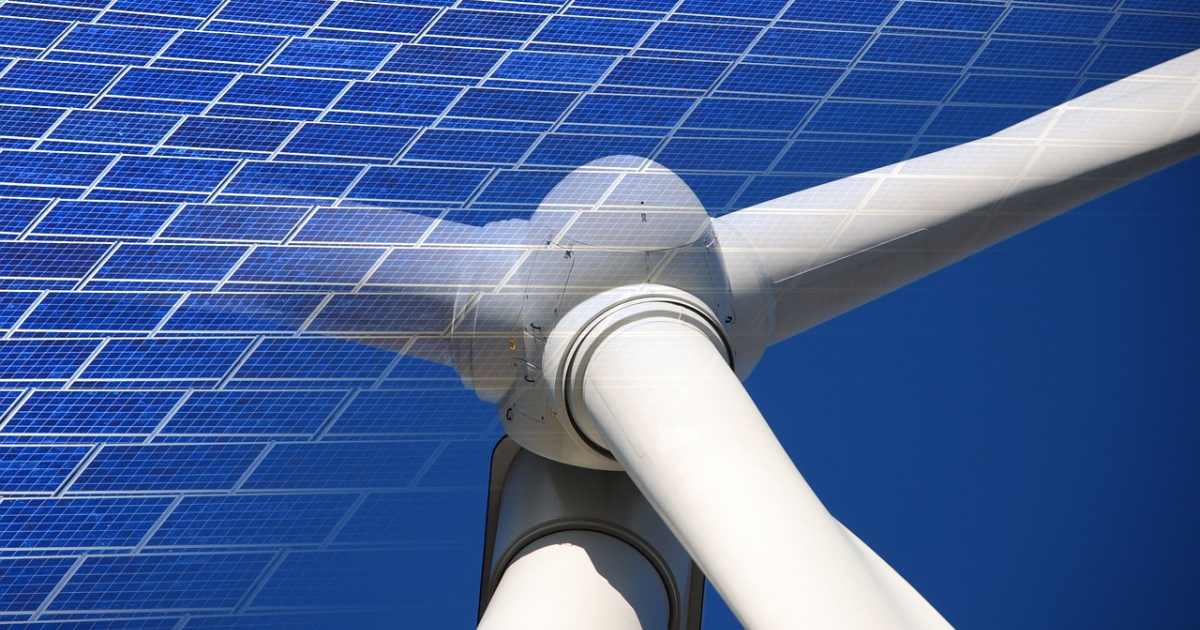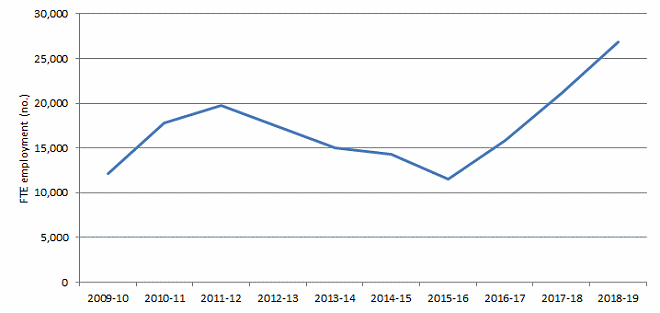
While it wasn’t without its challenges, two reports released this week paint a very rosy picture of how renewable energy fared in Australia last year.
On Monday, the Australian Bureau of Statistics (ABS) published data on employment in renewable energy activities in Australia in 2018-19. The report states annual direct full time equivalent (FTE) employment was estimated at 26,850 jobs for the period. This was an increase of 5,770 jobs (+27%) from 2017-18 and represented the highest level of FTE employment in renewable energy activities in Australia since 2011-12.

Source: ABS
The boost was driven by an increase in rooftop solar system installation related activity (2,880 additional FTE jobs), large scale solar PV construction (1,600 additional FTE jobs) and wind farms (1,220 additional FTE jobs).
Here’s the breakdown of the 26,850 jobs:
- Rooftop solar (13,070)
- Large-scale solar PV (4,740)
- Wind (3,240)
- Hydro (3,060)
- Biomass (1,580)
- Govt/NPI (1,120)
- Geothermal (40)
ABS noted its rooftop solar figures include solar hot water systems and small scale batteries. The Bureau states rooftop solar has been the heavy lifter in jobs contribution in every year of the published time series and as at December last year, 27% of suitable private dwellings had a rooftop solar PV system installed.
The full report can be viewed here: Employment in Renewable Energy Activities, Australia, 2018-19
2020 Clean Energy Australia Report
The Clean Energy Council released its 2020 Clean Energy Australia report yesterday, which noted 4.4 GW of new renewable energy capacity was installed across the country last year. Half of that capacity was in the form of small-scale solar installations – another record. The 2.2 GW of large-scale capacity was installed across 34 projects, with large-scale solar comprising more two-thirds of the new capacity.
The CEC states renewables now account for 24 per cent of Australia’s total electricity generation.
A breakdown of renewable energy types:
- Wind: 35.4%
- Hydro: 25.7%
- Small-scale solar: 22.3%
- Large-scale solar: 9.3%
- Bioenergy: 6%
- Medium-scale solar: 1.3%
The report notes, and we mentioned last year, there’s still plenty of room for rooftop solar to grow in Australia. Research published in 2019 estimated Australia’s total rooftop solar capacity potential is 179 GW; with an annual output of 245 terawatt-hours (TWh) – more than Australia’s current annual demand (just under 220 TWh).
Among other interesting figures in the CEC’s report were stats on home solar battery systems – it states more than 22,000 small-scale batteries were installed in 2019.
The full report can be viewed here: 2020 Clean Energy Australia.

 RSS - Posts
RSS - Posts



Speak Your Mind